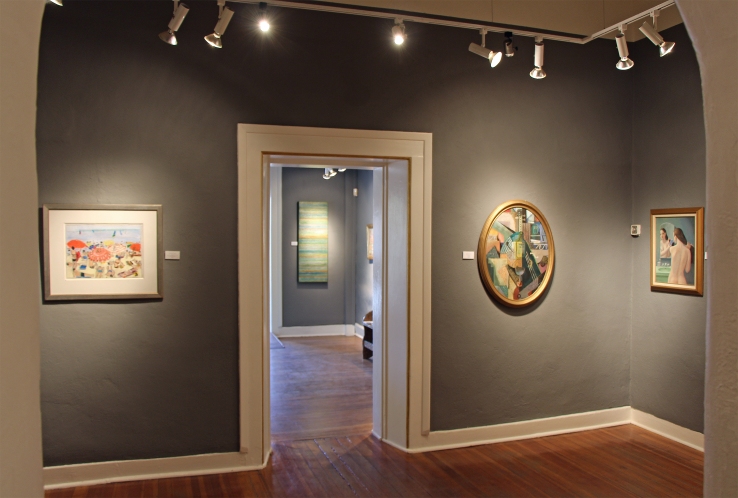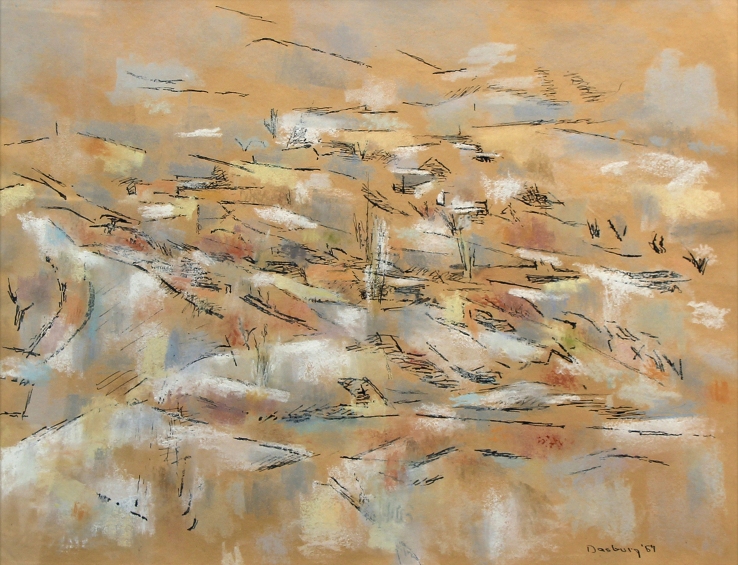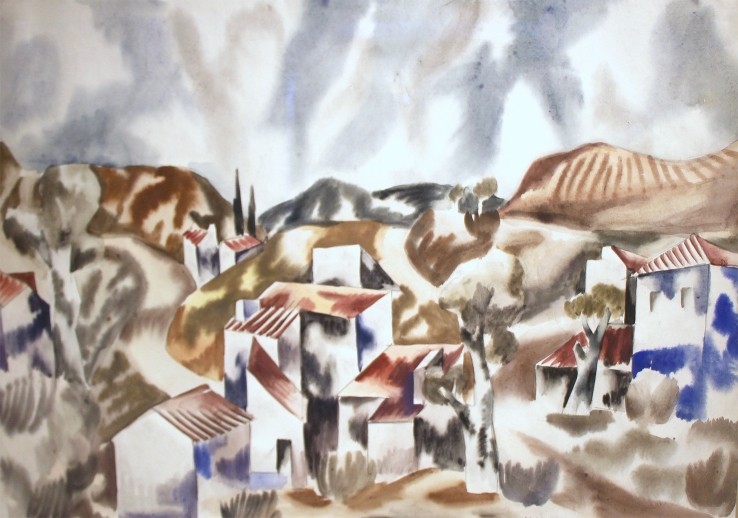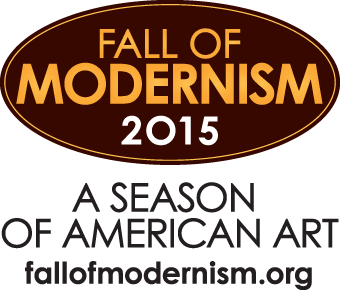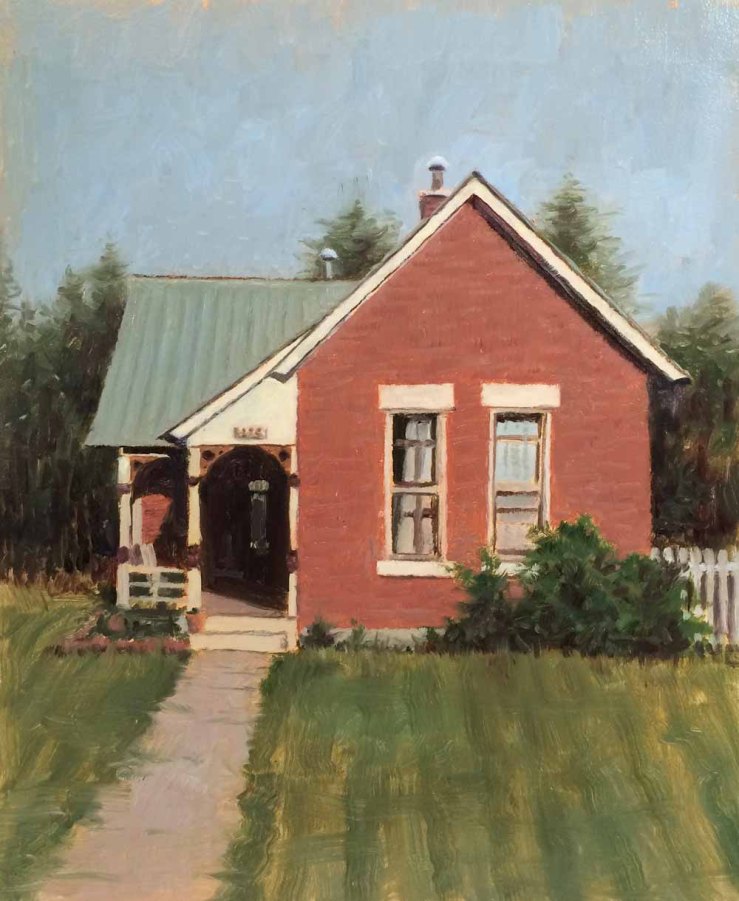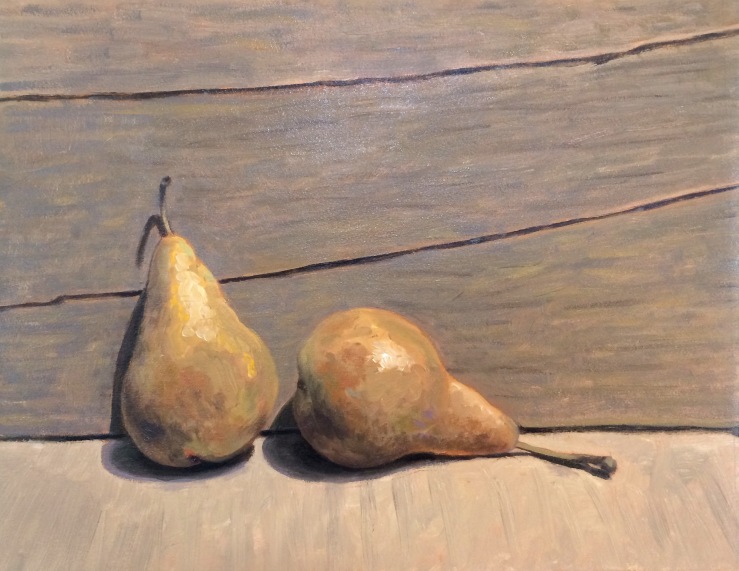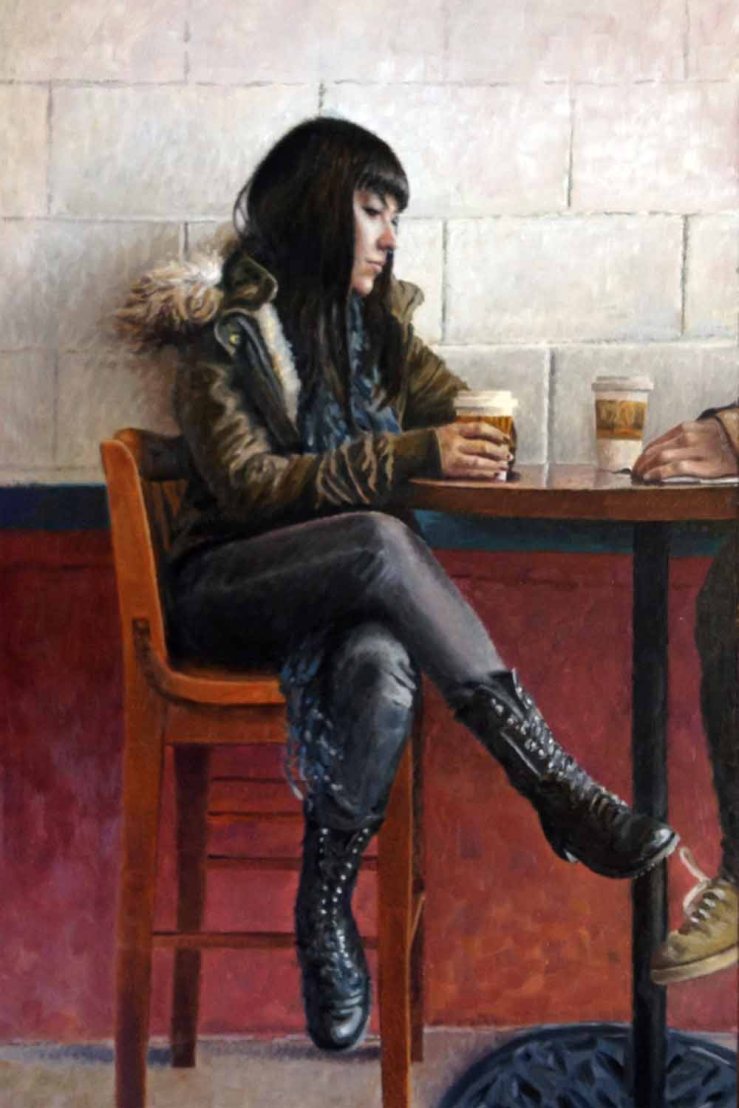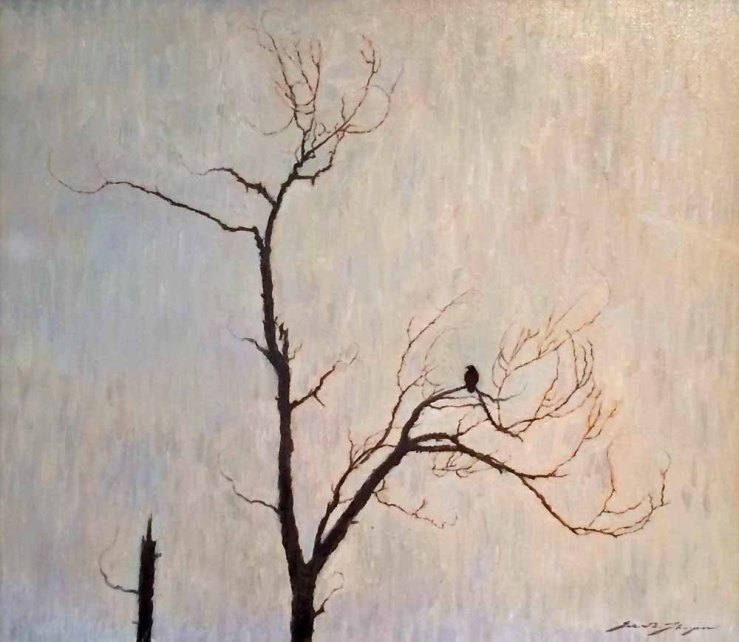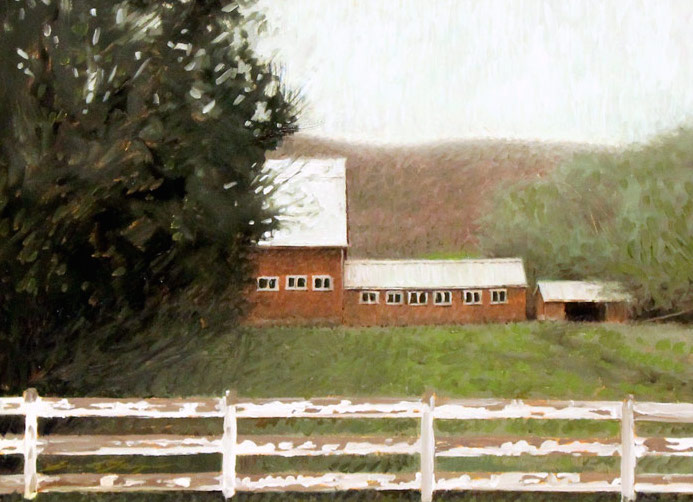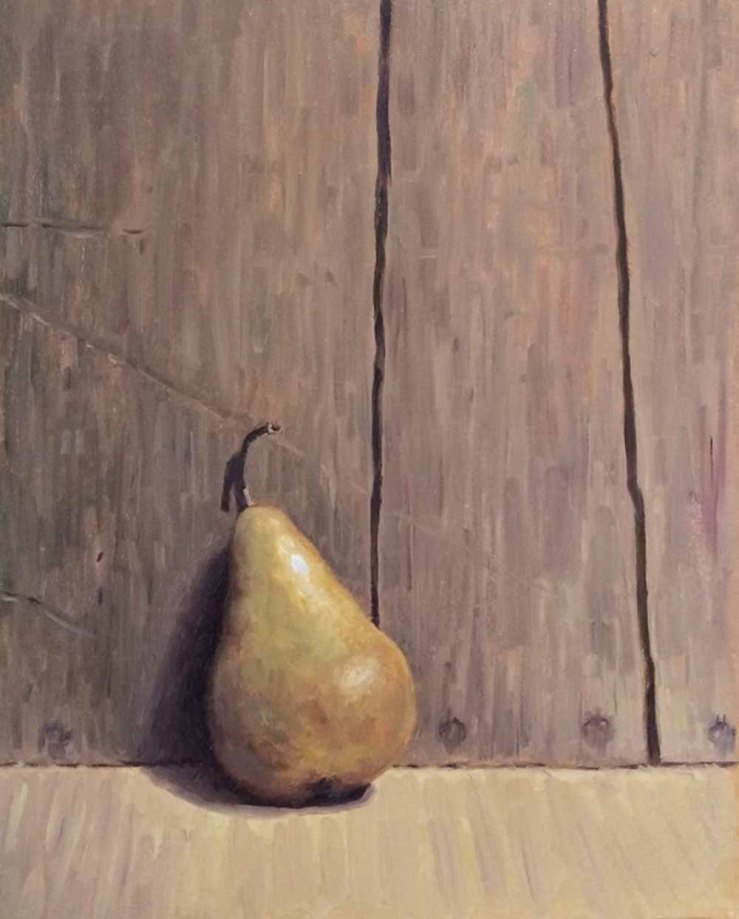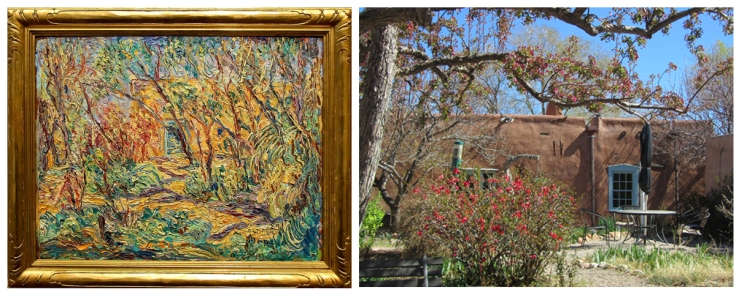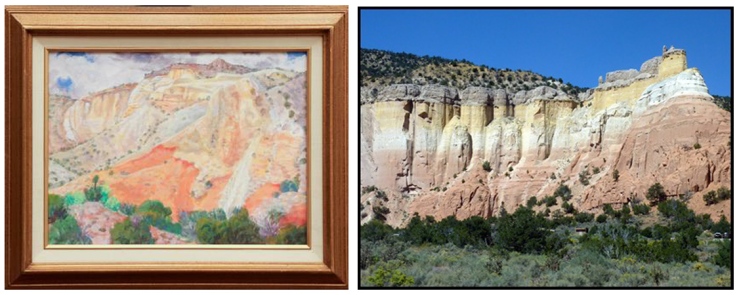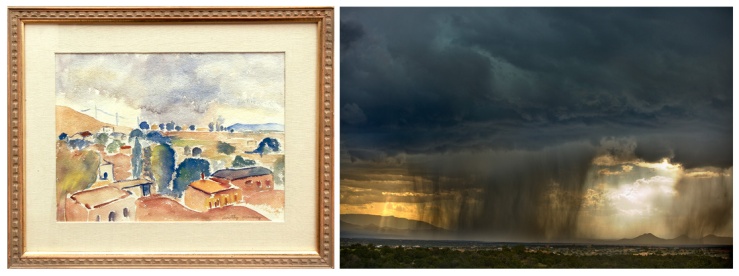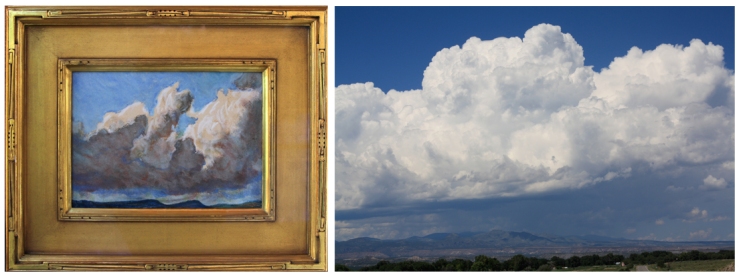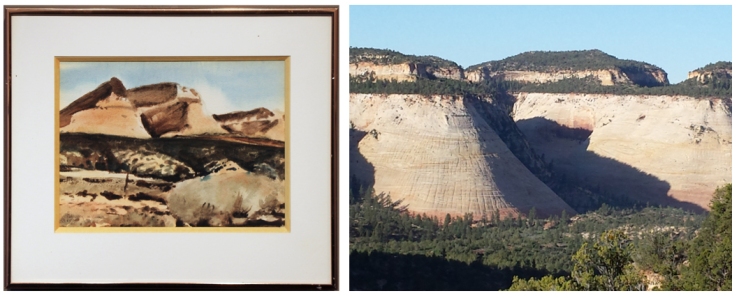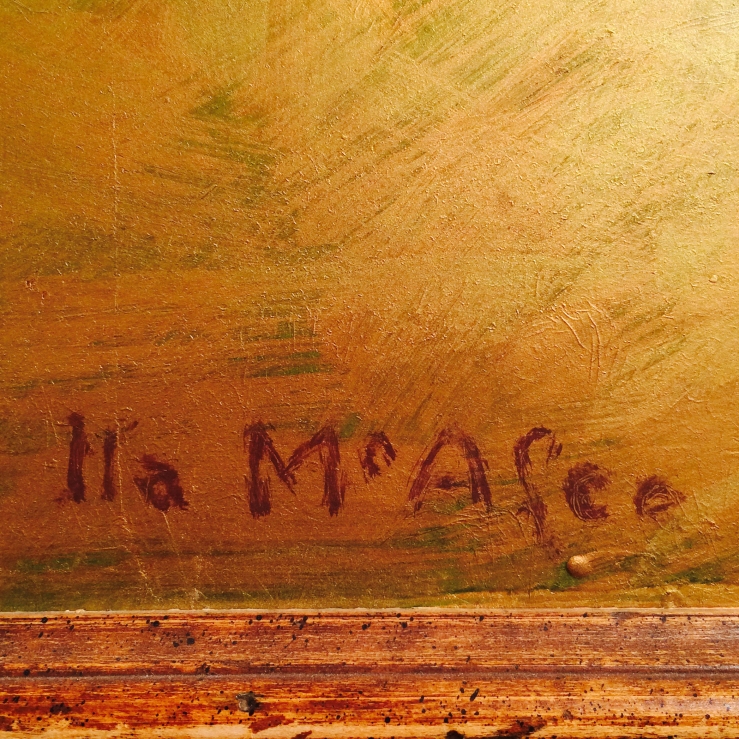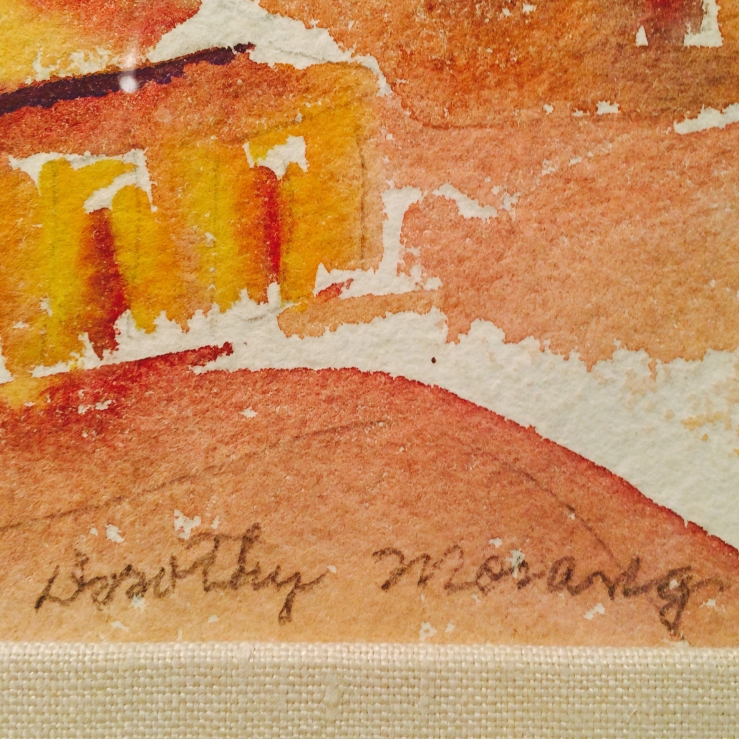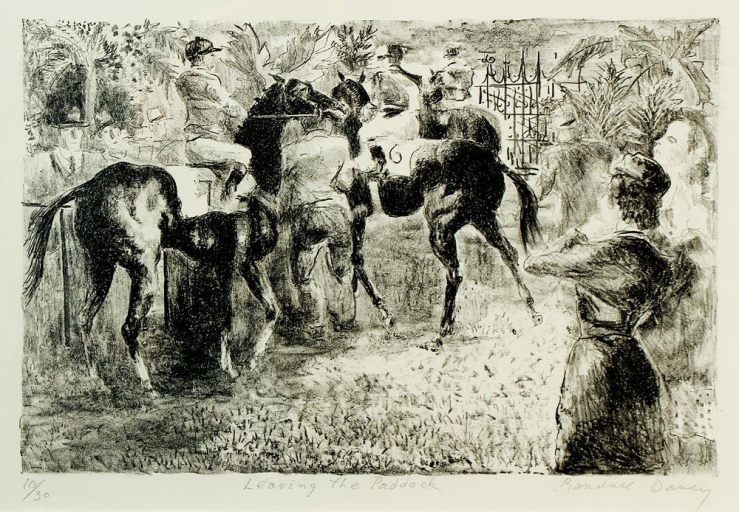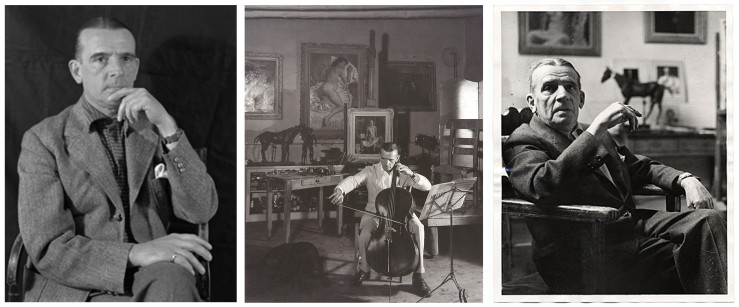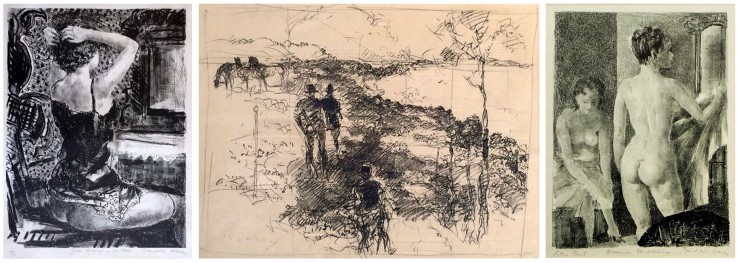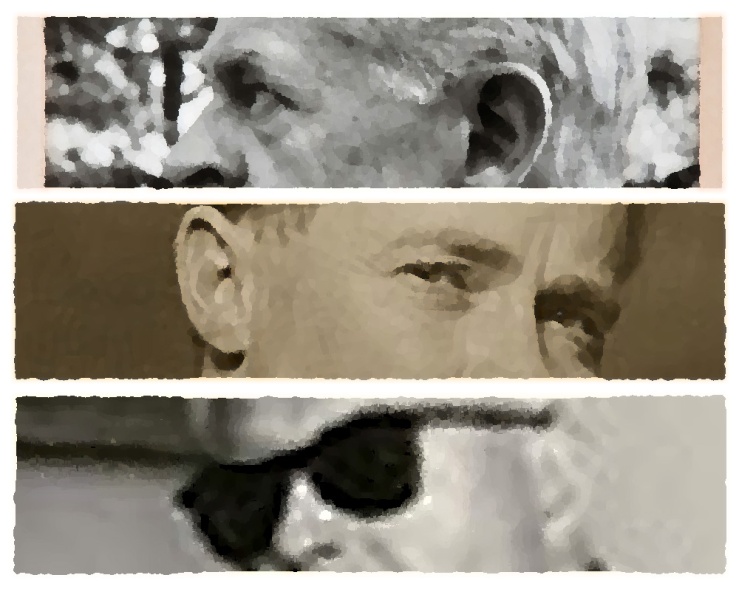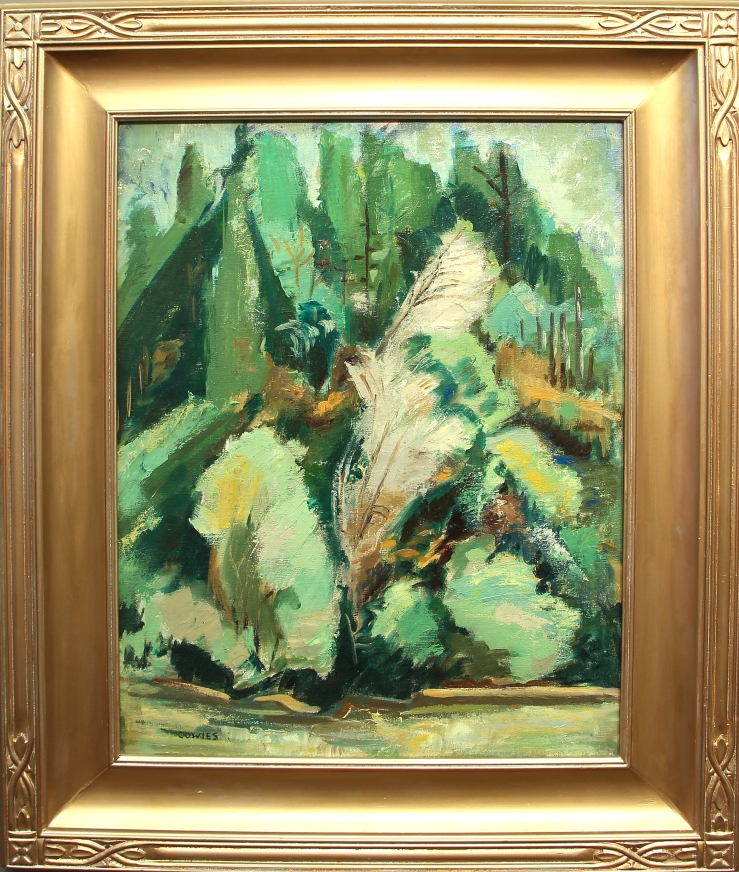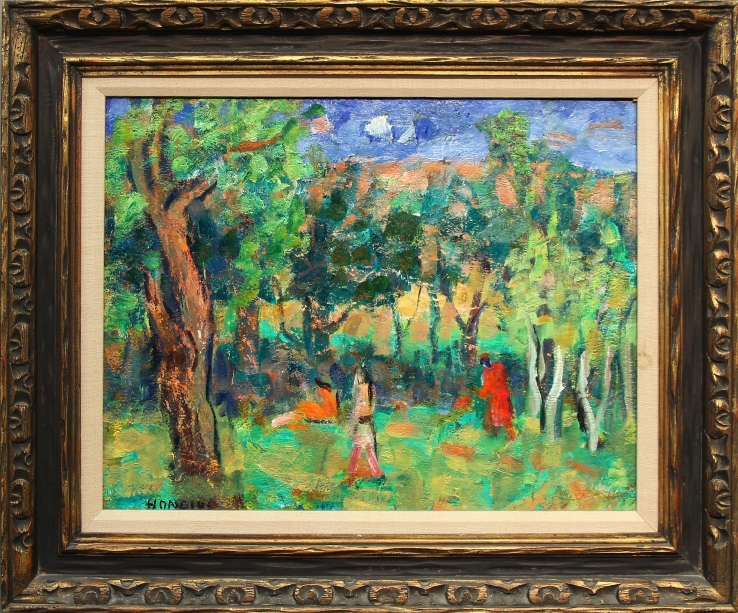From the early 1960s through the early 1970s, I lived on and off in New Mexico. In February 1963, at age nineteen, I left an upper middle-class Connecticut home to rent an uninsulated shack in Duran for $10 a month, and stayed until late March. In 1965, I returned to New Mexico to enroll in St. John’s College. In Santa Fe, with my friends Mac and Alan, I began exploring the City Different. This excerpt from “In Search of America” recounts my first meetings with artist Tommy Macaione.
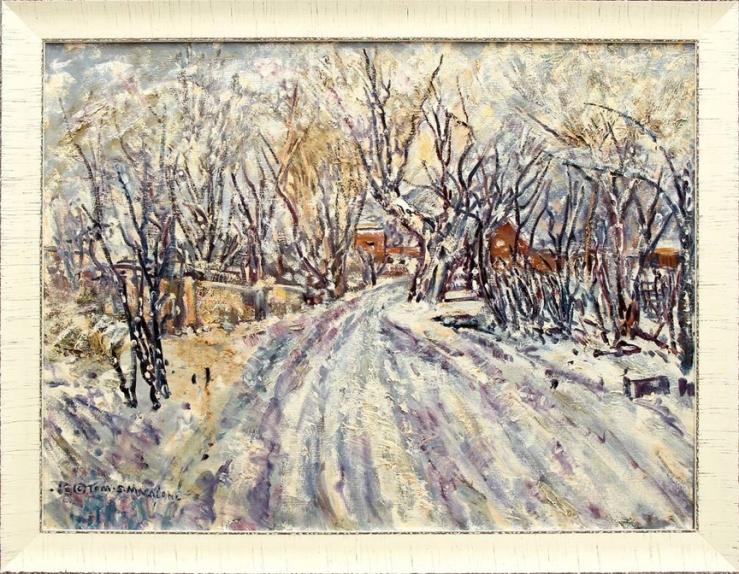
Winter snow was melting the afternoon Alan rushed into our dorm and announced to Mac and me that he had discovered a great painter. He sat down on the edge of Mac’s bed. “He’s as good as Van Gogh. You’ve got to see him.”
He drove us down the hill to Canyon Road and parked in front of a one-story stuccoed house. A hand-painted sign above the front door read:
PAINTINGS – Tommy Macaione—El Differente
El Differente had a painting propped in his window, an intense landscape reminiscent of Van Gogh.
We jumped out of the car. Alan knocked on the screen door and Tommy called, “Wait! Wait!” Moments later he pulled the door open, and through the screen said, “I can’t let you in yet. I can’t let my babies out.” He pushed his dogs aside with his feet, all the while talking loudly to them. We entered a tiny living room empty of furniture but stacked with paintings. The paintings were in various stages of completion. They were painted with thick daubs and streaks of color, wild profusions of emotion. But on one wall he hung two conventionally rendered paintings—one of a pair of flamenco dancers, another of a pipe and a bowl with fruit. “I hang those,” Tommy said, “so that people will know that I can paint like that, if that’s what they want.”
A stench filled the room. Tommy’s clothes were covered with dog hair. His bed was covered with dog hair, the sheets and cover balled together. Empty dog food cans with bits of decayed meat lay on the floor next to dog turds. There were wet spots and stains where his dogs had peed.
Tommy had the title “El Differente” legally affixed to his name. And different he was. He was in his mid-fifties with a long unkempt beard, hideous breath, and hair that shot out in all directions. He was missing several teeth; those he had were brown and yellow.
“I’m having a terrible time,” Tommy told us, “I’m STARVING. Things are worse, Alan. I passed out just the other day and the day before that, too, I’m so hungry. I haven’t enough to even feed my babies.”
His eyes watered and he spoke frantically, in a rush.
“We can help you out, Tommy,” Alan told him. “How about coming up to dinner this evening?”
“Boys, do you mean it?”
“Sure we do,” Alan said.
“I love you boys,” he said, grabbing Alan and hugging him. “Can you drive me downtown? Do you have time? I have to get some bones for my dogs, they’re starving. God would be very angry with me if I let them die.”
“Sure,” Alan said, “let’s get in the car.”
Tommy sat up front with Alan. His smell sickened me. Mac and I rolled down our windows but the rush of air could not eliminate his odor.
We drove to a grocery store where Tommy walked to the meat department and returned with large bags filled with bones and meat scraps. Meanwhile, I bought a box of spaghetti, several cans of tomato sauce, Italian sausage, two loaves of bread, and a can of soup.
“This ought to hold you for a while,” I told him.
He cried and hugged me.
I was happy for him and envious of his intensity and dedication and lack of inhibition, but his sentimentality embarrassed me.
That night Alan brought him to the dining room, a large hall with balconies and clean light wood tables. The hall was clean, spare, modern. Tommy wore a torn corduroy coat with bulging pockets, baggy pants thinning at the knees, and old cracked shoes with knotted laces. With his wild hair and unkempt beard Tommy looked as out of place as anyone could. But we were proud of our find; after all, we were mingling with the townspeople.
That struck me as the big gap between us and the other students: they had little to do with the town. Their interests were in the program, themselves, and a handful of friends. We, on the other hand, lived only partly for St. John’s. You might say the books were for us a jumping off point, a different way of exploring the world, a kind of background to it. The real thing was life, people.
“God bless you boys, God bless you,” Tommy kept saying.
When Kyle our waiter told us the selections, Tommy said excitedly, ”You mean I can have a choice?”
Alan said, “Sure. And if you want more later you can have it.”
When Kyle brought our orders Tommy immediately pitched into his food, gobbling it and talking while he ate. “St. John’s is a great school, a great school. You boys are very lucky to be here. Me, I didn’t have a college education. I went to art school. I knew very early I wanted to be a painter.”
“Have you always made your living as a painter?” I asked.
“A living!” he practically screamed. “I can’t make a living at painting now!”
“Right,” I said.
“I was a barber for years, in New York. When I came to Santa Fe in fifty-three I was a barber.”
His fingers were greasy from picking up food with his hands. When bits of meat and vegetables became entangled in his beard, he did not notice.
“If you boys want to do me a favor,” he said loudly, his mouth filled with food, “something God will bless you for, get me a show at St. John’s.”
“All right,” Alan said, “we’ll do that.”
Periodically the college hung an art exhibit in a gallery on the balcony overlooking the dining hall. We arranged Tommy’s show through Colonel Deal, who crated the exhibits. We arranged to meet Colonel Deal at Tommy’s studio. Colonel Deal brought his station wagon and selected the paintings and we stacked them in his car and in Mac’s. We spent the afternoon hanging the show while Tommy walked around, jabbering excitedly, “God will bless you. I pray for you. You are good boys for doing an old man this kindness.”
We had Tommy to dinner several more times. For fifteen years Tommy had starved in Santa Fe. Whenever things got especially tough he took out a large ad in The Santa Fe New Mexican—the town paper—pleading for help. He traded paintings for the ads. Now he thought his fortunes were changing. He thought that with a show at St. John’s he would begin to attract wealthy buyers. He wrote prices of three and five hundred dollars on small cards in a scrawl and posted them next to the paintings. Then he scratched out those prices and scribbled in higher ones.
For days afterwards we spent hours with Tommy in Mac’s room before a tape recorder as he told us his life story and his theories of art. He wrote huge summaries of these in his large hand on greasy papers. All this was for a biography and artist’s statement, which we were to type up and photocopy and put in a stack in the gallery. We never wrote the biography or the statement. Tommy kept walking or hitchhiking up to St. John’s to see the show. Benevolence and gratitude changed to indignation. He railed at us.
“For two months now you’ve done nothing,” he would say. “That’s not right. You made a promise and if you’re gentlemen you’re supposed to stick to them.”
He was right.

